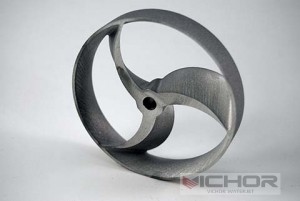
Unlock the Possibilities with Precision Custom Water Jet Cutting Services
In the world of modern manufacturing and fabrication, precision is paramount. The ability to shape materials exactly to specification, without compromise, is what sets exceptional projects apart. This is where the power of custom water jet cutting services becomes indispensable. Combining immense force with pinpoint accuracy, this technology offers a versatile and efficient solution for a vast array of industries. Whether you’re an architect designing intricate metal artwork, an engineer prototyping a new aerospace component, or a homeowner creating a unique backsplash, understanding the capabilities of custom water jet cutting services is the first step toward bringing your most complex designs to life.
This article delves deep into the world of water jet cutting, exploring its core principles, unparalleled advantages, and practical considerations to help you determine if it’s the right choice for your next project.
What Exactly Are Custom Water Jet Cutting Services?
At its core, custom water jet cutting services utilize a highly pressurized stream of water, often mixed with an abrasive substance like garnet, to cut through virtually any material. Think of it as a super-powered, ultra-precise pressure washer. A high-pressure pump intensifies water to extreme pressures (typically 60,000 PSI or higher), which is then focused through a tiny nozzle, often made of sapphire or diamond, to create a supersonic jet.
The “custom” aspect is crucial. Unlike standard cutting methods that might be limited to specific shapes or volumes, these services are built around your unique design files. You provide a digital blueprint—typically a CAD (Computer-Aided Design) drawing in formats like DXF or DWG—and the computer-controlled (CNC) water jet system translates that design into exact physical cuts. This process allows for incredible complexity and personalization, making it ideal for one-off prototypes, short production runs, and highly detailed artwork.
The Unmatched Advantages of Choosing Water Jet Cutting
Why do so engineers and designers turn to custom water jet cutting services? The benefits are numerous and significant:
Material Versatility: This is arguably the greatest strength. Water jet cutting can handle materials that would be damaged by other thermal cutting processes. This includes metals (titanium, aluminum, steel, brass), stone and tile, glass, composites, rubber, plastics, and even food products. It’s a true one-stop-shop for multi-material projects.
Cold Cutting Process: Since water jet cutting does not use heat, it eliminates the Heat-Affected Zone (HAZ). This means the structural integrity of the material remains unchanged. There is no hardening, warping, or thermal stress introduced, which is critical for materials that are sensitive to high temperatures.
Exceptional Precision and Quality: CNC technology ensures incredibly accurate cuts with tight tolerances (typically within ± 0.005 inches). The edges are smooth and often require no secondary finishing, saving time and money on post-processing.
No Tooling Changes: Unlike machining or die-cutting, a water jet doesn’t require expensive tooling or drill bits. The same jet cuts every material and every shape. Switching from cutting a complex pattern in titanium to engraving details on marble simply involves loading a new digital file, drastically reducing setup time and cost.
Environmental Friendliness: The process produces no hazardous fumes or vapors, as it doesn’t burn or melt material. The waste is primarily just the cut material and used abrasive, which is non-toxic and can often be recycled or disposed of easily.
Materials That Meet Their Match with Water Jet Cutting
The list of materials compatible with custom water jet cutting services is extensive. It effectively cuts through almost everything, making it a universal solution.
Metals: From thin sheet metal to thick armor plate (up to 12 inches or more in some materials), water jets excel with stainless steel, aluminum, tool steel, copper, and exotic alloys like Inconel.
Stone and Tile: A premier choice for fabricators creating custom countertops, intricate floor inlays, wall art, and backsplashes. It allows for detailed designs without chipping the delicate material.
Glass: Perfect for creating decorative glass panels, architectural features, and smartphone screen prototypes without cracking or shattering the material.
Composites: Lightweight but difficult-to-cut materials like carbon fiber and Kevlar are sliced cleanly without fraying or delaminating the layers.
Plastics and Rubber: Acrylic, polycarbonate, PVC, and rubber gaskets are cut cleanly without melting the edges or releasing harmful toxins.
The Step-by-Step Process of Custom Water Jet Cutting
Engaging with a provider of custom water jet cutting services is a collaborative and streamlined process:
Design and Quote: You provide your design file to the service provider. They will analyze the material, thickness, and complexity of the cut to provide an accurate quote, usually based on cutting time per linear foot.
Material Selection and Setup: You can supply your own material or have the provider source it for you. The material sheet is securely placed on the cutting table of the water jet machine.
Programming: The technician uploads your CAD file into the machine’s computer. The CNC software plots the cutting path for optimal efficiency and accuracy.
Execution: The machine is started. The high-pressure pump activates, and the water stream begins its path, precisely following the digital design. For harder materials, the abrasive is introduced into the stream just before the nozzle.
Finishing and Delivery: Once the cuts are complete, parts are removed from the main sheet (a process called “nesting”). Depending on your requirements, parts can be deburred or finished further before being carefully packaged and shipped.
Common Applications Across Industries
The applications for custom water jet cutting services are nearly limitless, spanning countless sectors:
Aerospace & Aviation: For cutting intricate components from high-strength, heat-sensitive alloys.
Architecture & Construction: Creating decorative metalwork, structural elements, and intricate stone and tile designs.
Automotive: Prototyping parts, manufacturing gaskets, and creating custom interior details.
Art & Design: Enabling artists to realize complex sculptures, metal art, and mixed-media installations.
Industrial Machinery: Manufacturing parts for assembly lines, tools, and heavy equipment with high precision.
Frequently Asked Questions About Custom Water Jet Cutting
Q: How thick of a material can a water jet cut?
A: While capabilities vary by machine, modern abrasive water jets can cut materials over 12 inches thick, especially softer ones like foam or rubber. For very hard metals like tool steel, practical thicknesses are usually up to 6-8 inches.
Q: What is the typical tolerance and kerf width?
A: Tolerances are typically within ± 0.005 inches. The kerf (the width of the cut) is determined by the nozzle size but is generally between 0.02″ and 0.05″. This is a crucial factor to account for in your design dimensions.
Q: Is water jet cutting expensive?
A: The cost is driven by cutting time, which is influenced by material type, thickness, and part complexity. While not always the cheapest option for simple cuts on thin materials, it is extremely cost-effective for complex shapes and hard materials because it eliminates tooling costs and reduces finishing time.
Q: How does water jet cutting compare to laser or plasma cutting?
A: Laser cutting is faster on thin metals but cannot cut thick materials or reflective metals (like copper) effectively and creates a HAZ. Plasma cutting is fast and economical for thick conductive metals but has a large HAZ and lower precision. Water jet is the cool, versatile, and precise alternative that works on almost any material.
Q: Can a water jet make beveled or angled cuts?
A: Yes! Advanced custom water jet cutting services use articulated or 5-axis cutting heads that can tilt and create precise beveled edges, which is essential for parts that need to be welded together.
Q: How do I prepare my design for a water jet service?
A: Provide a clean, accurate 2D vector file (DXF or DWG are ideal). Ensure all lines are connected and the design is to scale. Clearly communicate material type, thickness, quantity, and any critical dimensions to the service provider.
When your project demands absolute precision, material flexibility, and flawless results, custom water jet cutting services stand out as the superior manufacturing solution. They bridge the gap between digital design and physical reality without compromising the integrity of your materials. By understanding the process, benefits, and applications, you can make an informed decision and leverage this powerful technology to unlock new levels of creativity and engineering excellence. For your next project that requires a perfect cut, consider the cold, precise force of a water jet.
continue reading
Related Posts
- 1371 words6.9 min read
- 1449 words7.3 min read




